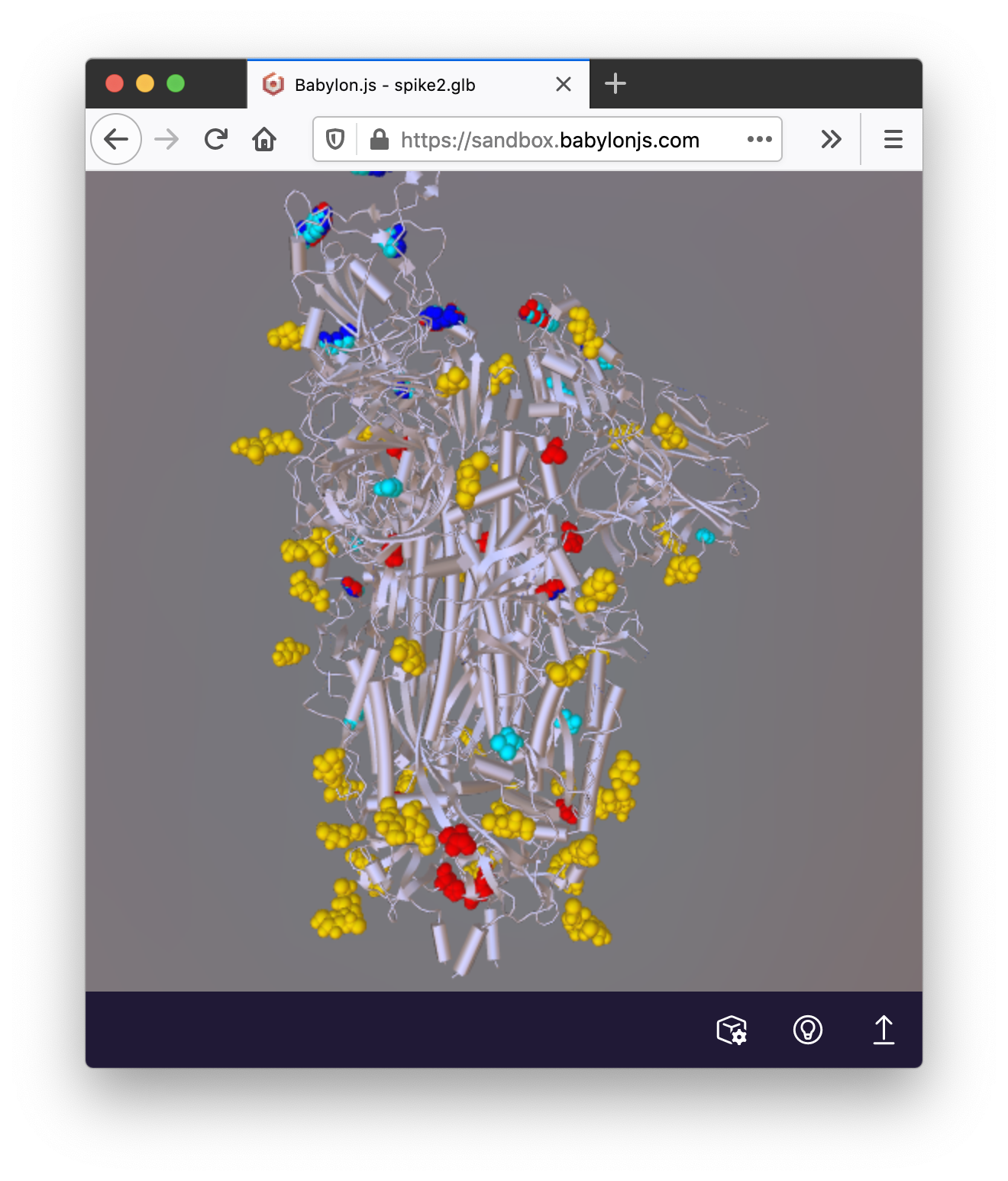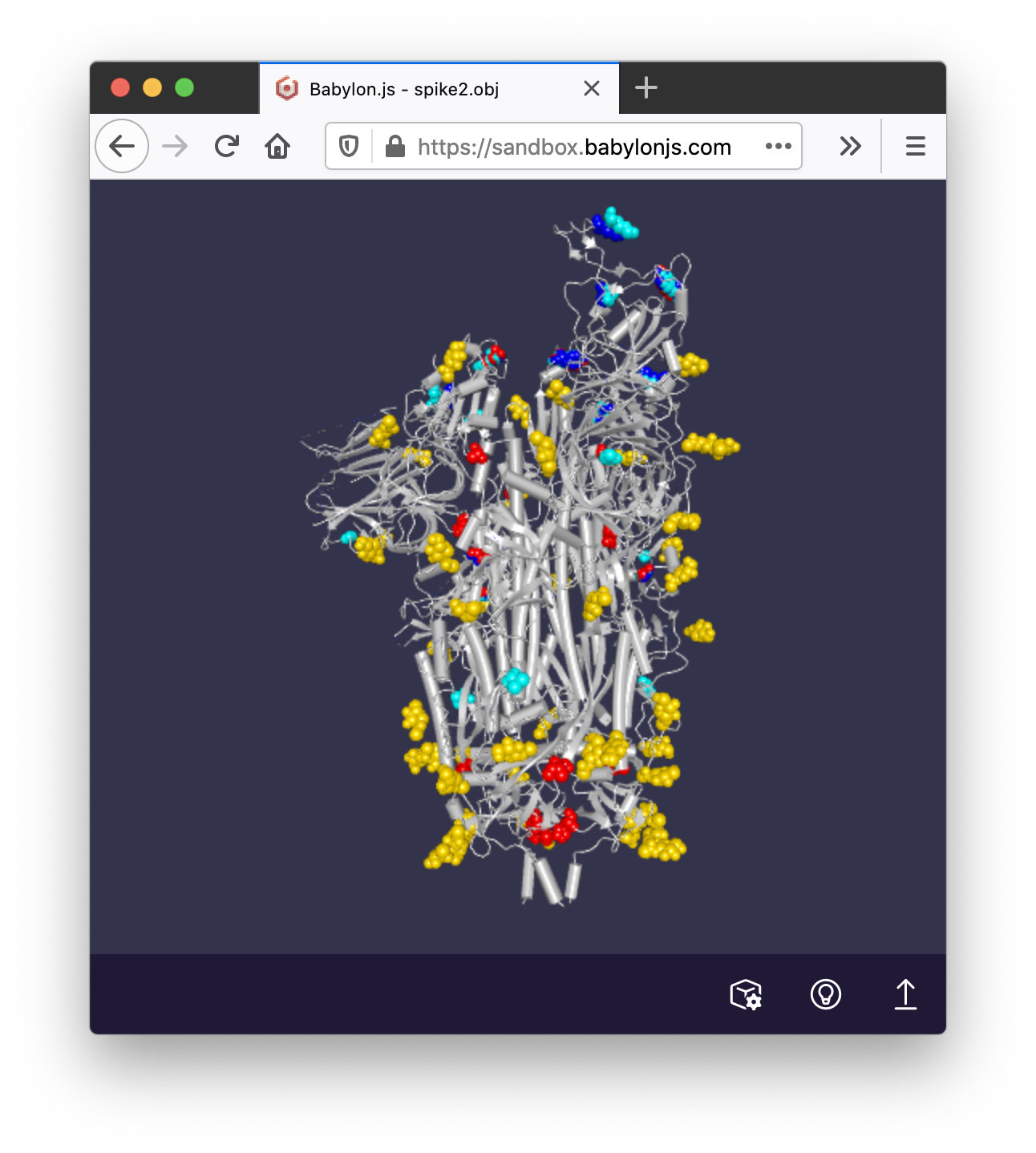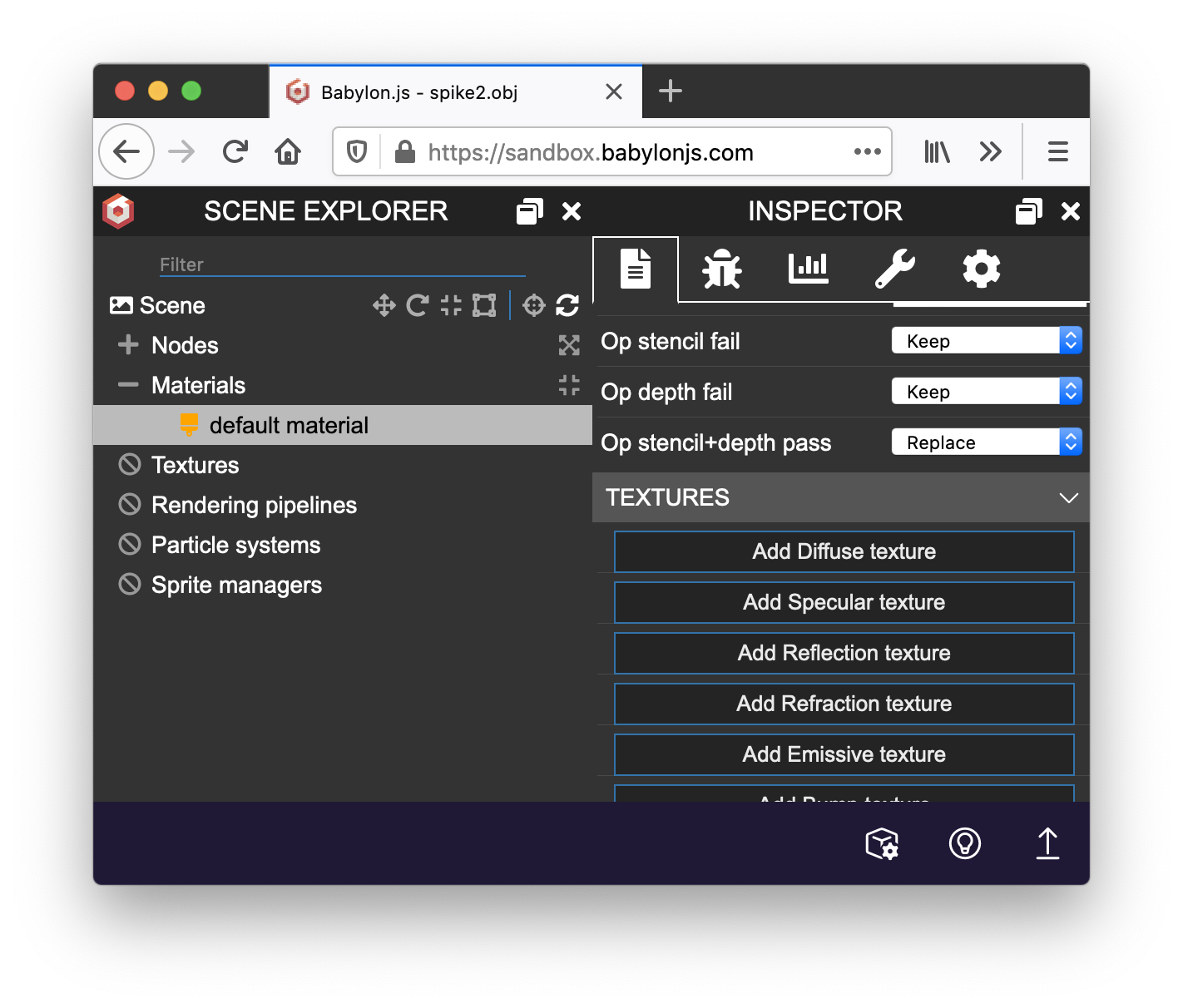

Tom Goddard
May 21, 2021, updated June 23, 2021
Here is how to export an atomic model from ChimeraX as a GLTF or an OBJ file with colors in a texture. Also we look at how to reduce the level of detail and file size. The goal is to create an atomic model that can be rendered in 3D in a web browser or used in other 3D apps (Unity, cell phones) that don't know about molecules.
For an example we will look at a coronavirus spike protein structure saved in ChimeraX session file spike.cxs, details of where this model came from are below.
open spike.cxs
We can export the scene in GLTF format
save spike.glb
The spike.glb file is 100 Mbytes. For many uses this is too large. The number of triangles shown in the scene is reported by the graphics triangles command.
graphics triangles
-> 3767472 total triangles
ChimeraX tries to give best appearance while still rendering fast and does not reduce the level of detail until it exceeds 10 million triangles. For showing the model on a web page or cell phone, 100,000 triangles would be a better size, giving faster download. The graphics quality command reports the level of detail and can change it.
graphics quality
-> Quality 1, atom triangles 2000, bond triangles 160, ribbon divisions 20
Using instead 50 triangles per atom, and 2 cartoon segments per residue, and 4 segments for the ribbon cross-section
graphics quality atomTriangles 50 ribbonDivisions 2 ribbonSides 4
reduces the triangle count by a factor of about 30 down to 110,000.
graphics triangles
-> 110632 total triangles
And saving the GLTF file (save spike2.glb) now gives a size of 4 Mbytes.

|
We can test the 3D model in the Firefox web browser using Babylon.js sandbox. Drag the spike2.glb file onto the browser window.
ChimeraX colors the model using vertex colors. Each of the 3 vertices of a triangle have a color and the color varies smoothly across each triangle. Babylon.js can read vertex colors. But it is hard or impossible to use vertex colors in some 3D modelling packages (Blender, Maya, Cinema4D), that instead use texture colors. The GLTF file saved above will contain vertex colors because that is what ChimeraX uses internally. To write texture colors (spike3.glb) use an additional option available in ChimeraX versions newer than June 24, 2021.
save spike3.glb textureColors true
Not all parts of a scene can be converted to texture colors. Parts that have continuous color variation, such as electrostatic potential or hydrophobicity coloring of a surface will still be output as vertex colors. We may remedy this in the future (see request #4808).
For OBJ format, the texture colors must be written to a separate image file which can be done as described below.
Wavefront OBJ is another file format read by almost all 3D modeling software. To write our model in OBJ format use ChimeraX command
save spike.obj
OBJ format does not support vertex colors, so the spike.obj file has no color information.

| 
in Babylon.js sandbox. |
Colors in OBJ format can only be shown using a texture. ChimeraX can write out a texture in addition to the OBJ file using the color image command
close
open spike2.glb
color image #1 coords vertexcolors writeColors spike_texture.png
save spike2.obj
To load the model in Babylon.js drag and drop the spike2.obj file on the Babylon sandbox web browser page. Then use Babylon settings, click on the default material, scroll down and add a diffuse texture choosing the spike_texture.png image file.
Here is what the texture image spike_texture.png looks like (scaled up since it is only one pixel high).

|
Our example atomic model is a coronavirus spike protein structure. Here is a ChimeraX session file spike.cxs that was created using ChimeraX commands spike.cxc.
It shows UK B.1.1.7 variant of sars-cov-2 (PDB 7LWT) with mutated residues red, and also the mutated residues for the Brazilian B.1.1.28 variant (PDB 7LWW) blue, and the mutated residues for South African B1.351 variant (PDB 7LYN) cyan, with glycosylation decorating the spike colored yellow. The mutations shown are relative to sequence UNIPROT P0DTC2. These structures are described in article Effect of natural mutations of SARS-CoV-2 on spike structure, conformation and antigenicity.